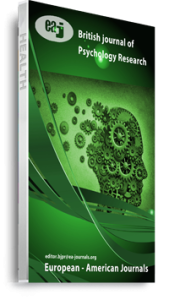This study produced data from Chinese infants who live in single-dialect and multi-dialect families, in an effort to study how language input might affect an infant’s language development at the pre-linguistic stage. The findings reveal that there is a positive association between multi-language input and infants’ phonetic ability. Infants at six to eight months of age are capable of distinguishing between phonetic units of dialect and standard language. This phonetic discrimination skill begins to weaken at 9-12 months of age, as confirmed by data from infants living in single-dialect families. However, no data suggests one pronunciation is significantly favoured over another. This is confirmed by tests with 11-month-old infants who live in two-dialect and three-dialect families. Infants raised up in multi-dialect families seem to keep two or three pronunciations of lexicons in mind and switch them depending on who they are communicating with.
Keywords: Infant, Multidialectal Environment, Pre-Linguistic Language Development

